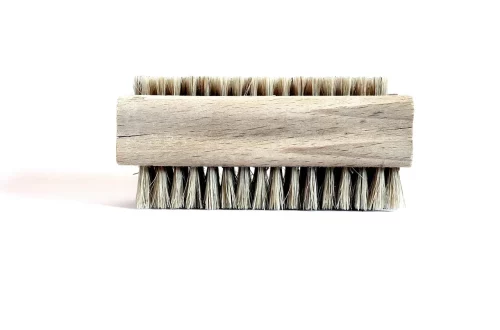
How to Recognize When Your Cat Is in Heat
Understanding your feline friend can sometimes feel like deciphering a complex code. Cats are known for their enigmatic behaviors, which can leave many owners puzzled. One particularly intriguing aspect of a cat’s life is when they come into heat, a natural part of their reproductive cycle. This phase can lead to noticeable behavioral changes that may be confusing for cat owners who are unaccustomed to the signs.
When a female cat is in heat, she undergoes a series of physical and behavioral changes that indicate her readiness to mate. These changes are influenced by hormonal fluctuations and can vary in intensity from one cat to another. During this time, your cat may become more vocal, affectionate, and restless than usual, showcasing behaviors that are quite different from her typical demeanor. Understanding these signs can help you provide the appropriate care for your pet, ensuring her well-being during this natural but sometimes challenging phase of her life.
Recognizing when your cat is in heat is essential not only for her comfort but also for managing potential breeding situations. As a responsible pet owner, being informed about this aspect of your cat’s health can lead to better decision-making regarding her care and future. In this article, we will explore the various signs of a cat in heat, enabling you to navigate this aspect of feline behavior with confidence and understanding.
Common Behavioral Changes in Cats in Heat
One of the most noticeable signs that your cat is in heat is a change in behavior. Typically, female cats will exhibit a range of behaviors that signal their readiness to mate. These behaviors can be quite distinct and may include increased vocalization, affection, and restlessness.
Vocalization is perhaps the most prominent sign. When a cat is in heat, she may engage in loud yowling or howling, which is her way of attracting potential mates. This vocal behavior can be quite startling for owners who are not used to these sounds. You may notice that she becomes more vocal during the night, which can disrupt your sleep if she is particularly active during those hours.
In addition to increased vocalization, many cats will become more affectionate than usual. You might find her rubbing against furniture, walls, and even you, as she seeks to mark her territory with her scent. This behavior is not just about physical affection; it’s also a way for her to signal to male cats that she is ready to mate.
Restlessness is another common symptom. You may observe your cat pacing around the house, searching for an escape route, or attempting to get outside. This behavior is driven by her instincts to seek out a mate. It’s important to provide a safe environment during this time, as her desire to roam may increase, putting her at risk of injury or getting lost.
Understanding these behavioral changes can help you prepare for this phase in your cat’s life. It’s essential to approach her with patience and reassurance, as these instinctual behaviors can be confusing for both you and your feline friend.
Physical Signs to Look For
In addition to behavioral changes, there are several physical signs that indicate your cat is in heat. These signs are crucial to recognize as they provide further confirmation of her reproductive status.
One of the most observable physical changes is her posture. When a female cat is in heat, she may exhibit a specific stance known as lordosis. This involves raising her hindquarters while lowering her front legs, a position that signals her readiness to mate. You may notice her doing this when you pet her back, as the contact stimulates her response.
Another physical sign is her increased grooming behavior. Cats are known for their cleanliness, but during heat, they may groom themselves more frequently. This increased grooming can be a way of preparing for mating, as they instinctively want to present themselves in the best possible condition.
Additionally, you may notice a change in her appetite. Some cats may eat less during this time, while others might show an increase in appetite. This fluctuation can vary greatly among individual cats. It’s essential to monitor her eating habits and ensure she stays healthy, providing her with a balanced diet throughout this phase.
Increased affection and headbutting are also common physical behaviors. Your cat might seek more attention and physical contact, which can be both endearing and overwhelming for owners. While it’s important to indulge her affectionate side, be mindful that her behaviors are driven by her instincts.
Recognizing these physical signs will empower you to better understand your cat’s needs during this time, allowing you to respond appropriately to her behaviors.
Duration and Frequency of Heat Cycles
The duration and frequency of a cat’s heat cycle can vary significantly, impacting how often you experience these behaviors in your pet. Understanding these patterns is crucial for managing your cat’s reproductive health.
Typically, a female cat will go into heat for the first time between six months and one year of age, though some may experience it earlier or later. The heat cycle, also known as estrus, usually lasts between three to seven days. During this time, if she is not bred, she may go out of heat for a brief period before entering into another cycle.
Cats are polyestrous, which means they can go into heat multiple times throughout the year. In general, a cat can have several heat cycles within a few weeks if she is not spayed. Each cycle will typically last about two to three weeks, followed by a period of anestrus when she will not show signs of being in heat. This pattern can repeat several times a year, leading to extended periods of behavioral and physical changes.
For owners, this can mean dealing with the effects of a cat in heat several times a year, which can be a challenge. If you find the behaviors overwhelming or if you are not planning to breed your cat, consider speaking with your veterinarian about spaying. Spaying not only helps prevent unwanted litters but can also alleviate the behavioral changes associated with heat cycles.
Being aware of the duration and frequency of these cycles can help you plan for your cat’s needs and ensure that she remains comfortable during this time.
Managing Your Cat During the Heat Cycle
When your cat is in heat, it can be a challenging time for both you and your pet. However, there are several strategies you can employ to help manage her behavior and ensure her comfort.
One of the most effective ways to manage your cat during this phase is to provide her with a calm and secure environment. If she tends to vocalize or roam more during heat, create a safe space where she can relax without feeling the need to escape. This might involve limiting her access to windows or doors to prevent her from attempting to go outside.
Engaging her in play can also be beneficial. Interactive toys, like feather wands or laser pointers, can help redirect her energy and provide a constructive outlet for her heightened activity levels. Additionally, spending quality time with her can help soothe her anxiety and strengthen your bond.
If your cat is particularly restless or anxious, consider using calming products. There are various options available, including pheromone diffusers or calming collars, which can help ease her stress and anxiety. Always consult with your veterinarian before trying new products to ensure they are safe and appropriate for your cat’s specific needs.
Lastly, if her behaviors become unmanageable or if you have concerns about her health, do not hesitate to reach out to your veterinarian. They can provide guidance and support tailored to your cat’s unique situation, helping you navigate this natural phase of her life with confidence.
In conclusion, understanding the signs of a cat in heat is essential for every cat owner. By recognizing the behavioral and physical changes, being aware of the duration and frequency of heat cycles, and employing effective management strategies, you can support your feline friend through this natural phase of her life.
**Disclaimer:** This article is not intended as medical advice. If you have concerns about your cat’s health or behavior, please consult your veterinarian for professional guidance.




